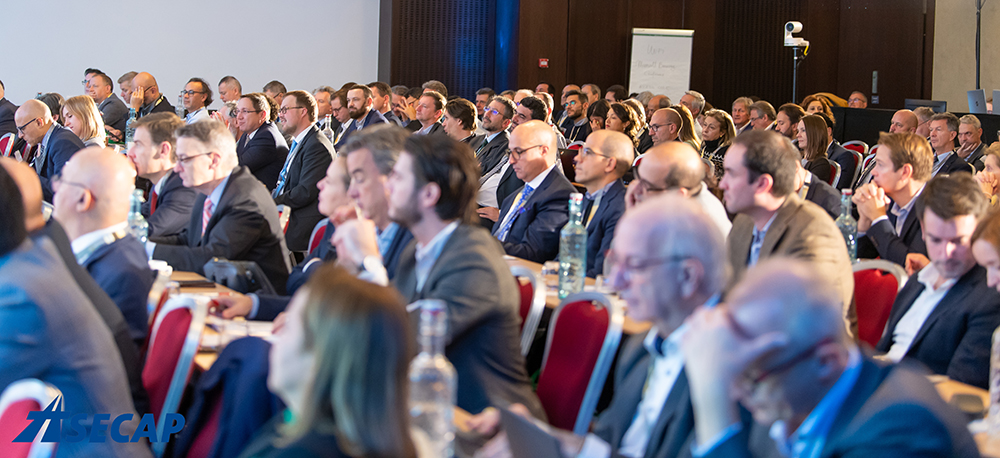
This year’s Asecap Days conference in Brussels took “decarbonising road infrastructure in a tough economy” as its theme. More than 250 delegates came together in the Belgian capital to get the expert view on some of the key challenges facing the ITS sector, such as the future for road user charging, infrastructure finance, climate change, cooperative, connected and automated mobility (CCAM) and cybersecurity.
In a future full of sustainable digital transport networks, expect “interoperability on steroids” says John Davis, commercial director of TollPlus, part of Vinci: “Rapid technology change and increased connectivity is totally transforming our business as Europe transitions towards a digital transport network.”
And it’s going to be complicated. “Digital transformation is happening everywhere,” Davis told the annual gathering of Europe’s leading toll road operators. “It’s leading to an Internet of Things [IoT] where everybody and everything is connected.”
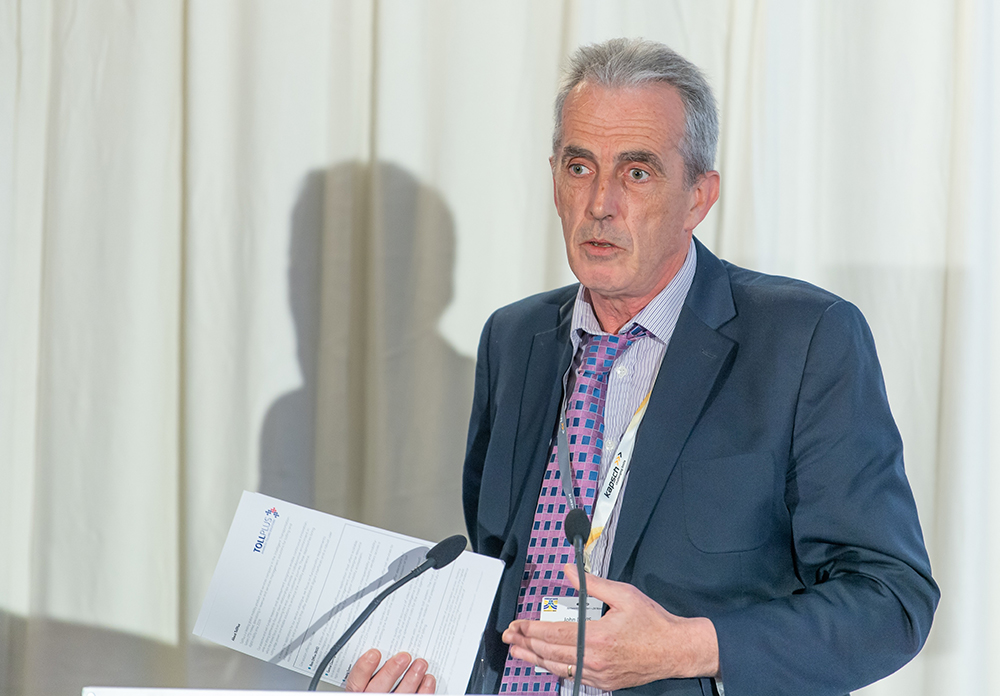
Emerging ITS technologies such as Mobility as a Service (MaaS) and connected and autonomous vehicles (C/AVs) are leading to an Internet of Transport Things (IoTT), he continued, all of which need to be layered through “a myriad of choices around adapting: emerging technologies, emerging cooperative business and operational models and changes in customer ownership”.
The challenge that ITS faces is: “How can such changes be safely adapted on top of legacy systems and existing operations?” With a lot of teamwork and commitment, said Davis. “Transitioning to a sustainable digital transport network [will be] very similar to the tolling sector’s transition to interoperability. It was a long journey, but we got there.”
Technology was “the easy part”, according to Davis. It was far trickier getting hearts and minds, and an innovative approach, to fall into place. It was worth the effort, though, he said, because this is also where the European Union’s heart lies.
The EU wants to “adopt digitalisaton as an integrated component of an interconnected, interoperable, and efficiently managed transport system”, he said. It wants “to improve the safety, security and environmental performance of the transport sector in Europe and prioritise sustainable transport policies as a key component of achieving the union’s climate action objectives”. These are the drivers behind almost all of the EU’s policy initiatives at present.
Data says it all
The common thread bringing all of these elements together is data and TollPlus has been developing back-office systems that are “transaction-focused,” packed with modular options that can be easily added or deleted. The ITS sector needs to be geared towards empowering people, businesses and organisations to make better decisions based on insights from data, reckons Davis.
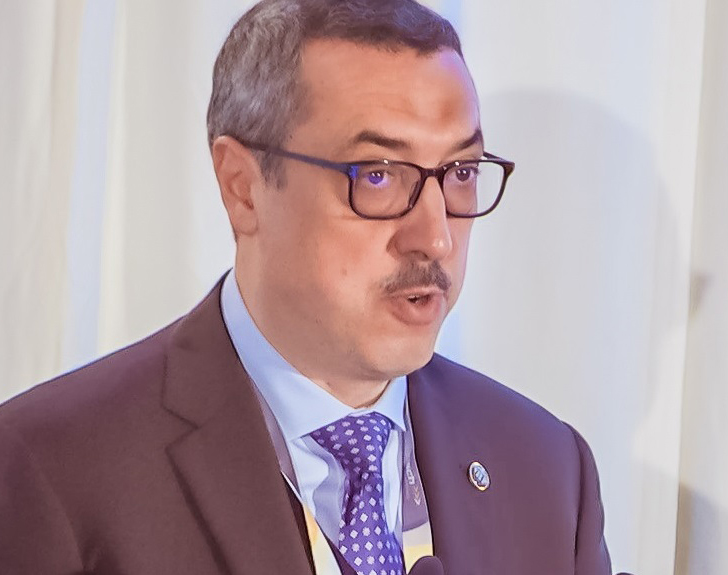
In Europe, there is a raft of new and emerging policy and regulatory requirements including Directive (EU) 2019/1024 on open data and the reuse of Public Service Information, the Data Governance Act (DGA), ePrivacy Regulation (ePR), General Data Protection Regulation (GDPR), the EU Sustainable and Smart Mobility Strategy, and the EU Data Strategy and its associated white paper on artificial intelligence.
It’s the same picture in the US where the industry is “grappling with similar challenges” despite less focus on “Regulation First”.
Other topics at this year’s Asecap Days included: green mobility and climate change mitigation via sustainable funding; sustainable low-carbon motorways; adapting roads in order to achieve a meaningful digital transformation; cooperative, connected and automated mobility (CCAM); new thinking around resilience, safety, and emerging technologies; and the future for road user charging.
There is a lot going on in the world right now, said International Road Federation (IRF Geneva) president Anouar Benazzouz, as companies struggle to contend with the vagaries of war, pandemic and climate change. “Going forward, the role of infrastructure planners, designers and contractors will fundamentally change,” he told the Asecap delegates.
“To be able to embrace new technologies as they emerge, countries around the world, and lending institutions, will need to have proper processes and regulatory frameworks in place. Infrastructure providers will need to ensure that they have the skills, knowledge and systems in place to build the associated infrastructure.”
His message and the call from IRF Geneva has been equally clear: “We need to learn system thinking. We need to build true partnerships to deliver on these critical issues.” Pragmatism will be key, Benazzouz added, and local context will matter more than ever. Why pragmatism? “Because roads move people and goods, [and] almost every journey involves interaction with roads. We need to decarbonise without compromising the services we provide and without undermining a vital network that serves all other transport modes, including active mobility and public transport.”

Don’t criminalise us
The same theme was taken up by Massimiliano Salini, member of the European Parliament, who agreed that the industry must work hard to prevent compromise and conflict: “I strongly reject the criminalisation of the road transport industry for climatic reasons.”
Salini says that he has to constantly remind the EU parliament “to consider how many sustainable technological solutions come from the ITS sector while maintaining the mobility of goods and people every day”. The EU needs to make policy and legislative decisions “based on scientific data and not on ideological positions: this is the real challenge for me, and for you”.
And scientific data underpinned a wide-ranging discussion on using digital twins to monitor traffic flows and improve road safety standards. “Information retrieval from all sorts of different data sources will be key to providing CCAM decision support,” argued Professor Wolfgang Schildorfer, vice dean for research in transport logistics and mobility at the University of Applied Sciences, Upper Austria. The industry needs to work towards the full convergence of all its tech developments if it is going to make real progress on CCAM, he said.
Europe’s motorway operators are well placed to support digital twin testing and can help provide the test beds necessary for bringing together work on “parallel projects” such as Cope and Esrium, both of which are trying to “intelligently combine information from all road users” such as people, automated vehicles, and road surfaces to create “a kind of ‘collective perception’ and ‘situation awareness’ platform”.
Yes to all of that, added Konstantinos Koutsoukos, president of Greece’s Hellenic Association of Toll Road Network (Hellastron) and chief executive of Egnatia Odos. “Motorway operators could be considered as a sports team coach who combines the skills of his players and decides how to set up the team for the best possible result,” he told the Asecap delegates. “Without players there is no team … [but] without a coach, the team cannot play.”
Europe’s motorway operators need urgently to define a clear approach for this new era, he continued: “They need to have an integrated and well-defined strategy; to develop and provide the demanded infrastructure; to complete the required digital transformation; to comply with the vision for sustainability; and to change their way of thinking and their operational philosophy.”
And none of this should come as a surprise. It’s been coming for a long time. Maybe it is a lack of funding that is holding things back, suggested Koutsoukos. So, he asked: “Who should fund, or co-fund, the motorway infrastructure needed?” How about: “The state (to improve the safety, mobility and the environment) by extending the concession period? The motorway industry itself (to decrease the operating expenses)? The automobile industry (to sell the next generation of vehicles)? The telecom industry (to sell more xG services)? The content providers (to sell "content" to users)? Or the users themselves (to travel quickly, safely and protect the environment)?”
Change the way you think
All of them in truth, he concluded, answering his own question. “We need to change our way of thinking and operational philosophy,” he said. “A new win-win approach is required because motorway operators will soon be just one of the links of the chain, and not the full chain. Time is precious, and even though this issue has been under consideration for the last few years, most operators are still thinking about how to set up the team.”
In short - stop thinking and act now, he argued: “We can take the leading role.”
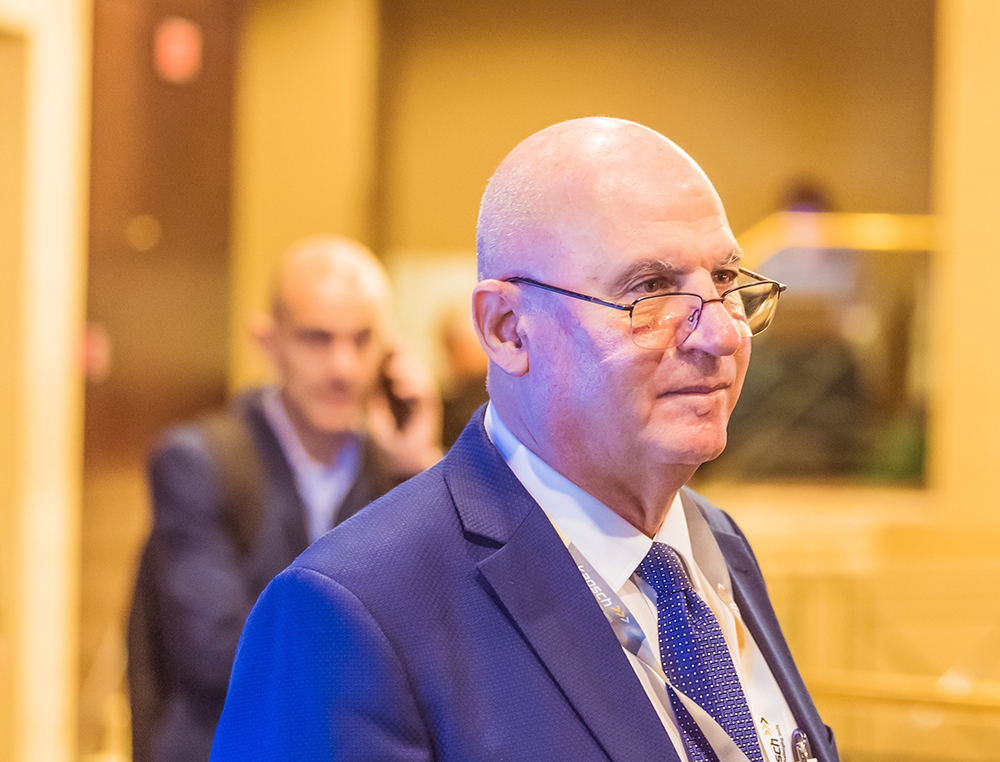
And it’s a role that Europe’s politicians value. According to keynote speaker Geert van der Linden, senior policy officer, DG Move, at the European Commission: “We know that for every €1 we invest in our roads, €8 comes back in societal gains.” Digitally transformed roads and proper traffic management technology mean less time lost in jams, he said. “To achieve our automation dream we need to take baby steps and set up new partnerships. We need to connect everybody to everything.”
The politicians will put their money where their mouths are too, Van der Linden added: “Smart mobility will connect all the dots and digital infrastructures will exchange info and collaborate with vehicles. Future-proof deployment will support human drivers today and prepare the roads for driverless vehicles tomorrow.” Public and private investments will be aligned, and legislation will provide the bedrock for it all.
Under the headline of ‘Efficient and green mobility’, Van der Linden told the Asecap conference that the EU is committed to a proposal to amend the ITS Directive 2010/40/EU that will extend the scope of the Directive to mandate availability of crucial data (real-time traffic information, road-safety related events and multimodal travel information services) … and mandate deployment of essential services (currently road safety).
In terms of measuring the success of these initiatives, Van der Linden said: “The expected impact of the revised Directive until 2040 (which includes mature C-ITS services) are: time-saved benefits of €145 billion and a reduction in the cost of accidents of €30bn.” All this for “a total cost of €21 billion, resulting in a cost-benefit ratio of 8:6.” A wise investment, thinks the EU .
Bringing down barriers on first free-flow toll motorway in France
According to Françoise Congestri, operations manager, toll and customer areas for French motorway operator APRR, the east-west free-flow section on the A79 offers three major advantages over a conventional toll barrier.
- More fluidity with no more stops and queues at the toll barrier: “This saves time, smooths traffic flow, and means there is less risk of traffic jams.”
- Improved safety with less risk of road accidents by avoiding slowing down and restarting in the midst of many cars. “This reduces the stress of arriving at the toll barrier and having to find the right lane, look for your payment method, etc,” she explains.
- More sustainable mobility: lower levels of fuel consumption and CO2 emissions are achieved by eliminating the need for vehicles to stop and restart at toll barriers. For example, each time it stops at a barrier, a heavy goods vehicle consumes one litre of ordinary diesel, which represents CO2 emissions of 3.1kg (source: ASFA - Association of French Motorway Companies).
“There is also less soil artificialisation because a free-flow overhead gateway requires less infrastructure than the installation of a conventional toll barrier,” Congestri says. “This means less land conversion and a much-reduced impact on the natural environment. The estimated surface area required for a toll barrier is 16hectares."
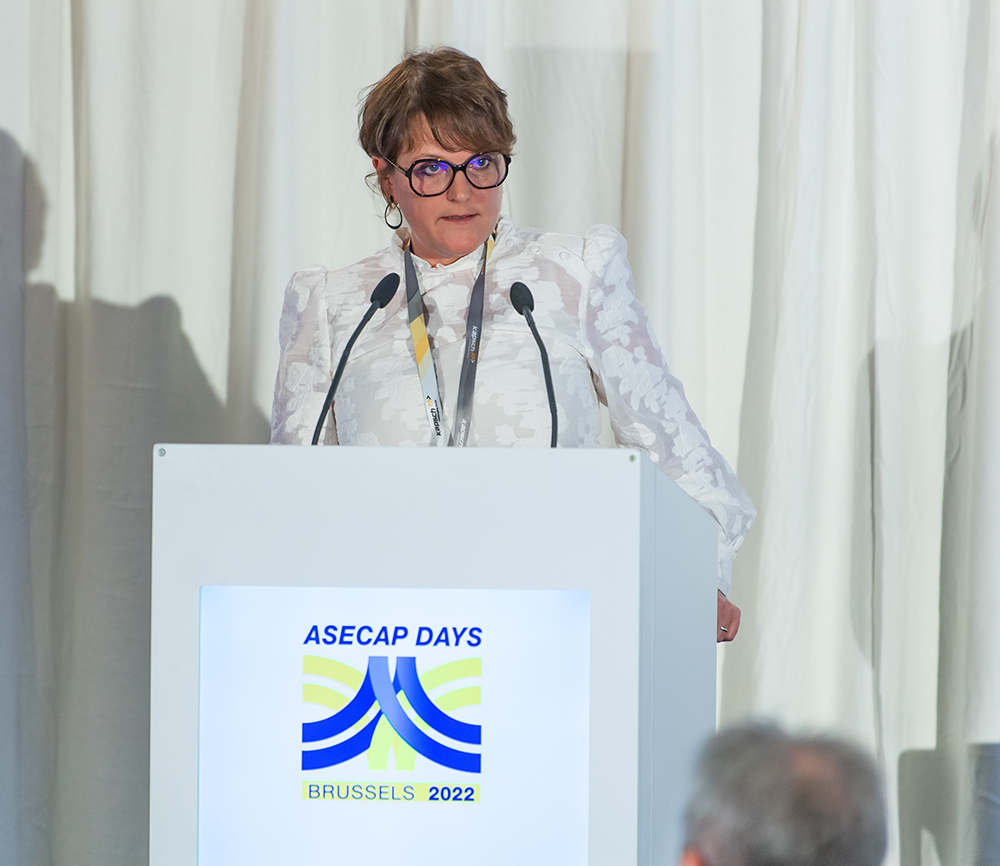
Working with Aliaé, Congestri says that the A79 test zone has been set up to use “a complex electronic toll system with antennae able to read toll tags, cameras, able to read licence plates, and lasers able to categorise vehicle categories”. For drivers, “signs are posted along the motorway to inform them that they are travelling on a free-flow toll motorway and of the four payment methods available”.
Firstly, she said, there is the toll tag so that drivers don't have to do anything. The invoice is made available each month in their online customer account and the user is charged automatically around the 15th of the month following the trip.
Secondly, customers register their vehicle’s number plate and bank details at www.aliae.com so plates are detected on every trip and their bank accounts are charged weekly.
The third option is pay-per-trip, where the drivers can pay online at www.aliae.com by “simply entering their number plate to find their trips. You must pay for your trip within 72 hours after using the A79, and to make sure you don’t forget to make a payment, you can register your email address and receive a notification as soon as payment is due.”
Fourthly, pay as you go, where “customers pause to pay for their journey with cash, bank card or private card” at a traditional terminal at the side of the road.
Congestri also shared the way in which the tolls are being collected according to vehicle type. “The A79 is the first motorway in France to adapt prices according to environmental criteria,” she proudly told the conference. “For light vehicles (class 1, 2 and 5), the overall toll will not exceed €5 for the 88km stretch of road, and there is a reduction for low-emission 100% electric vehicles. And, for heavy goods vehicles (class 3 and 4), the overall toll will not exceed €20 for the 88km. Again, there will be reductions or penalties according to their euro pollution class.”







